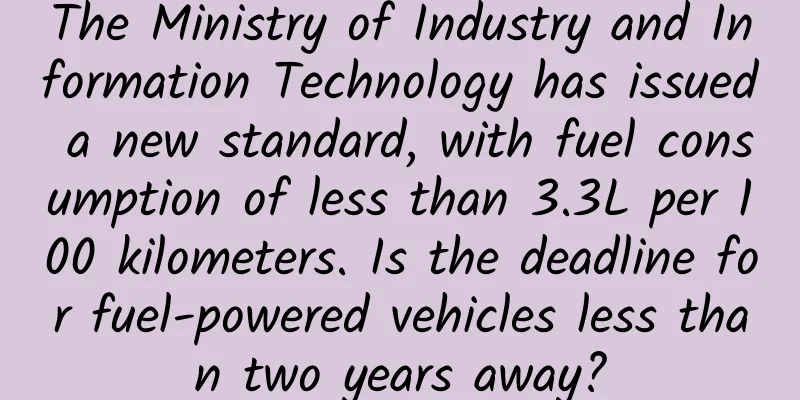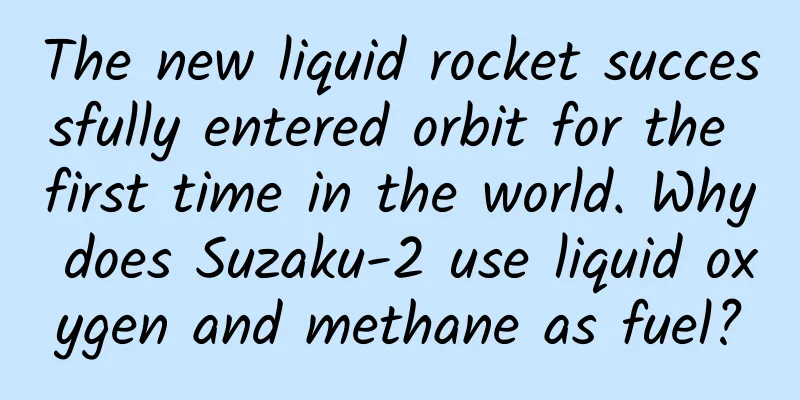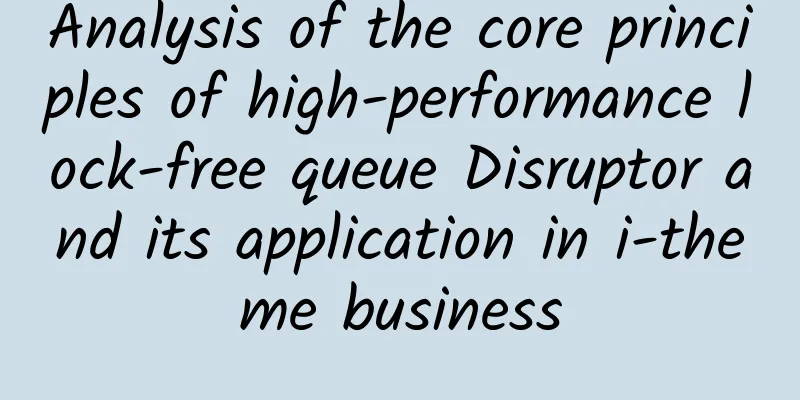The Ministry of Industry and Information Technology has issued a new standard, with fuel consumption of less than 3.3L per 100 kilometers. Is the deadline for fuel-powered vehicles less than two years away?

|
The Chengdu Auto Show is underway, and compared with last year, the voice of new energy vehicles has been further enhanced this year. In July before the auto show, the penetration rate of new energy vehicles in China had exceeded 50%, and at this time, "fuel vehicles have been pushed into a desperate situation" has almost become an industry consensus. This puts great pressure on manufacturers that rely on fuel vehicles. They have been falling for the past three years. Recently, the policy level has dealt a heavy blow to these manufacturers. On August 21, the Ministry of Industry and Information Technology released a draft for soliciting opinions on the "Evaluation Methods and Indicators for Passenger Car Fuel Consumption". There is some key information in the draft opinion that is worth noting: from January 2026, the fuel consumption of vehicles sold in the domestic market, for vehicles with a mass between 1.09-2.51 tons, the WLTC fuel consumption must be controlled within 3.3L per 100 kilometers; for vehicles below 1.09 tons, the fuel consumption requirement is as low as 2.57L per 100 kilometers; for vehicles over 2.51 tons, the fuel consumption per 100 kilometers needs to be controlled within 4.7L. What does it mean that the car weighs 1.09 tons and consumes 3.3L of fuel per 100 kilometers? Let’s talk about a few well-known car models: Volkswagen Lavida, the lightest version weighs 1.295 tons and has a fuel consumption of 5.92L per 100 kilometers; Toyota Corolla, the lowest body weight is 1.335 tons, and the lowest fuel consumption is 4.06L per 100 kilometers; Nissan Sylphy, the lightest body weight is 1.21 tons, and the fuel consumption is 5.94L per 100 kilometers. These are all common A-class cars, which are relatively low-end family cars, and all come from mainstream brands with a certain lead in engine technology. If the fuel consumption value stipulated in this draft for comments eventually becomes a mandatory national standard, most models on the market will not meet the standard. In other words, if traditional fuel vehicles cannot come up with epoch-making fuel engines within two years, then even if they still have a market in 2026, they will be subject to a "one-size-fits-all" policy. The development of the automobile industry itself is the result of the joint efforts of policies and consumers. However, according to the general laws of fuel engine development, it is basically impossible for traditional car manufacturers to reduce fuel consumption to within 3.3L within two years. Of course, there are other ways to reduce fuel consumption, such as lightweight body, low wind resistance design, etc. But in the short term, it is unlikely that traditional car manufacturers will significantly reduce fuel consumption by reducing wind resistance and reducing body weight. The difference between 3.3L fuel consumption per 100 kilometers and 5L fuel consumption is too big. Lightweight body and low wind resistance design can only play an auxiliary role and are unlikely to directly reduce fuel consumption by half. However, the draft for comments released by the Ministry of Industry and Information Technology did not give a clear definition of "fuel consumption". The BYD Qin PLUS DM-i weighs 1.5 tons, and its official fuel consumption per 100 kilometers is 4.6L, and its comprehensive fuel consumption per 100 kilometers under WLTC conditions is 2.17L. If the so-called "fuel consumption" refers to the comprehensive fuel consumption calculated after calculating various working modes, then the current mainstream plug-in hybrid models can meet the standard; but if fuel consumption refers to So-called Therefore, there are still many uncertainties in this draft for comments. Whether the fuel consumption value proposed in it will be revised and how the fuel consumption should be calculated are still unknown. But one thing is certain, that is, no matter what the final fuel consumption limit is, it will be significantly lower than the current standard. At present, the penetration rate of new energy vehicles in China has exceeded 50%, and it may rise to more than 70% in 2026. The transformation trend of the automobile market has been basically established. Therefore, from a policy perspective, the new fuel consumption value standard is unlikely to reverse the trend. The new fuel consumption value standard is definitely aimed at restricting fuel vehicles and fuel engines. For those manufacturers who still rely on fuel vehicles at this stage, every time the fuel consumption standard is revised, the pressure on them will increase. Unlike the European and American countries, which have been changing their policies repeatedly, China's policies on new energy vehicles have always been relatively consistent. Once a new policy is formulated, it will be implemented resolutely. And this new standard, no matter from which angle you look at it, is like the most severe order to expel fuel vehicles. In fact, anyone who knows the history of new energy vehicle development knows that in China, the standards for emissions and energy consumption are becoming stricter year by year, so it is not surprising that the Ministry of Industry and Information Technology issued such a draft for comments. At the policy level, China has never announced a specific timetable for banning the sale of fuel vehicles like the EU, but because of the strict emission and energy consumption standards, it seems that it is only a matter of time before pure fuel vehicles exit the domestic market. How should traditional car manufacturers respond next? The only way is to speed up the transition to new energy, increase independent research and development efforts, and launch more new energy vehicle models that can gain a foothold in the market to "hedge" the risks brought by policies. The starting gun for the knockout round is really about to be fired this time. As a winner of Toutiao's Qingyun Plan and Baijiahao's Bai+ Plan, the 2019 Baidu Digital Author of the Year, the Baijiahao's Most Popular Author in the Technology Field, the 2019 Sogou Technology and Culture Author, and the 2021 Baijiahao Quarterly Influential Creator, he has won many awards, including the 2013 Sohu Best Industry Media Person, the 2015 China New Media Entrepreneurship Competition Beijing Third Place, the 2015 Guangmang Experience Award, the 2015 China New Media Entrepreneurship Competition Finals Third Place, and the 2018 Baidu Dynamic Annual Powerful Celebrity. |
<<: Why Apple Pay is not popular in China? Apple's efforts are far from enough
Recommend
Polylactic acid, a biodegradable material in the new era, is the "key to the future" to green environmental protection
Produced by: Science Popularization China Author:...
Uncover the secret of Perfect Diary’s private domain conversion!
In the early days, Perfect Diary achieved phenome...
Zhiji Auto: In November 2024, Zhiji Auto’s sales reached 10,007 units, with sales exceeding 10,000 for several consecutive months
Zhiji Auto recently announced that the cumulative...
How to attract fans through WeChat and how to attract fans through WeChat activities?
WeChat, a social software owned by Tencent, has b...
Is immunity testing really reliable?
Is immunity testing reliable? This is a hot topic...
12 Ways to Attract New Customers in the Education Industry
Regardless of the industry, attracting new custom...
Rendering of the Internet cafe built by Apple 20 years ago is exposed: full of technology
The impression of Internet cafes has gone through...
WeChat Index is here, how to use it well is limited only by your imagination
Recently, WeChat launched the " WeChat Index...
iOS 16.4.1 official version is released urgently, it is recommended to upgrade
Apple released the official version of iOS 16.4.1...
Detailed explanation of the characteristics of information flow promotion channels such as Toutiao and Weibo!
If we want to do information flow promotion , cha...
Analysis and Extension of Java Dynamic Proxy Mechanism
introduction The emergence of Java dynamic proxy ...
How to quickly advance to the second level in search oCPC? Get it now!
How many conditions are needed to send search oCP...
Internet celebrities rely on "weight loss gummies" to maintain their figure? But I suggest you don't buy them!
The popularity of the dating variety show "S...
Driven by 5G demand, smartphone shipments are expected to grow 5.5% this year
Recently, the International Data Corporation (IDC...
TikTok Promotion: TikTok’s Growth Troubles!
Short videos were already in their infancy in 201...









